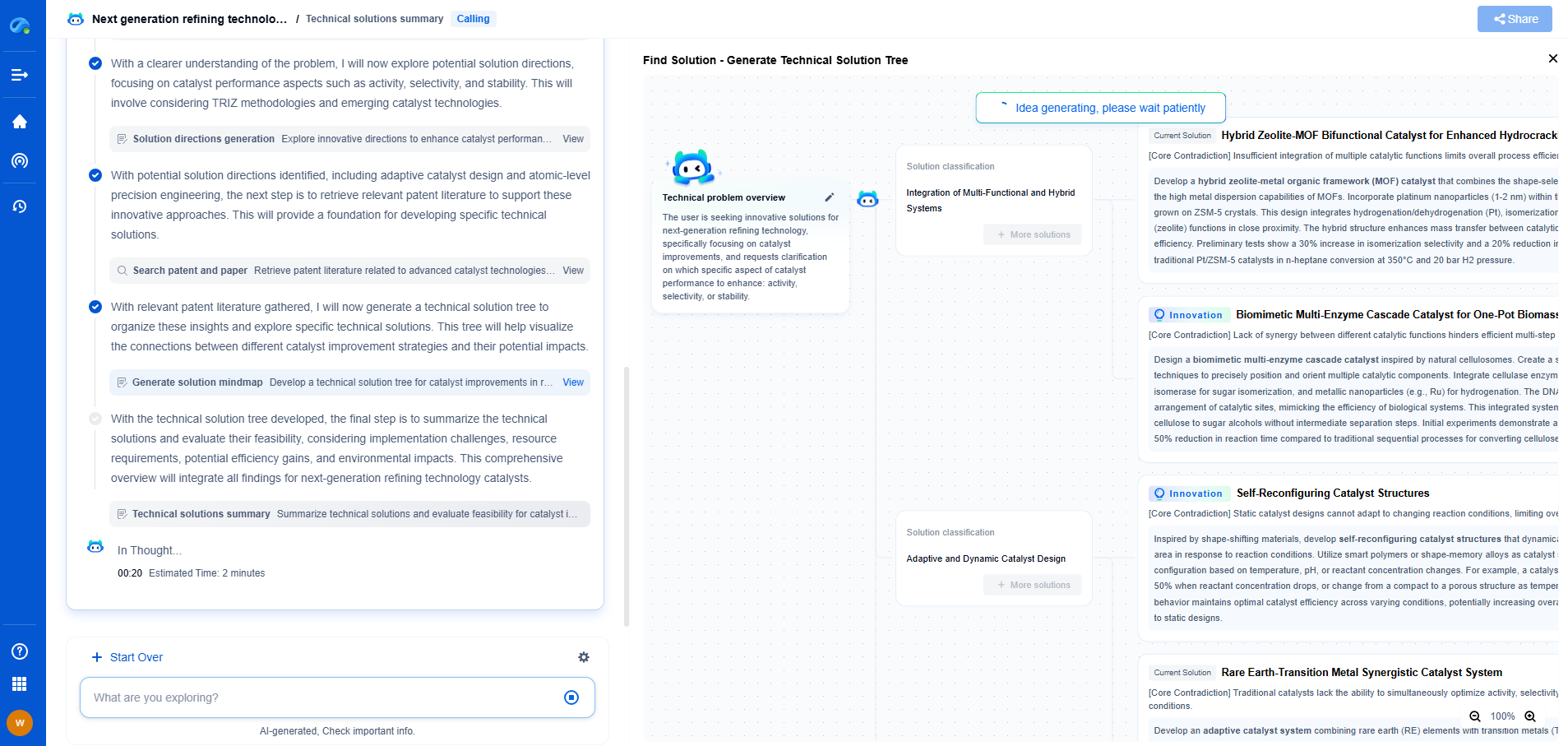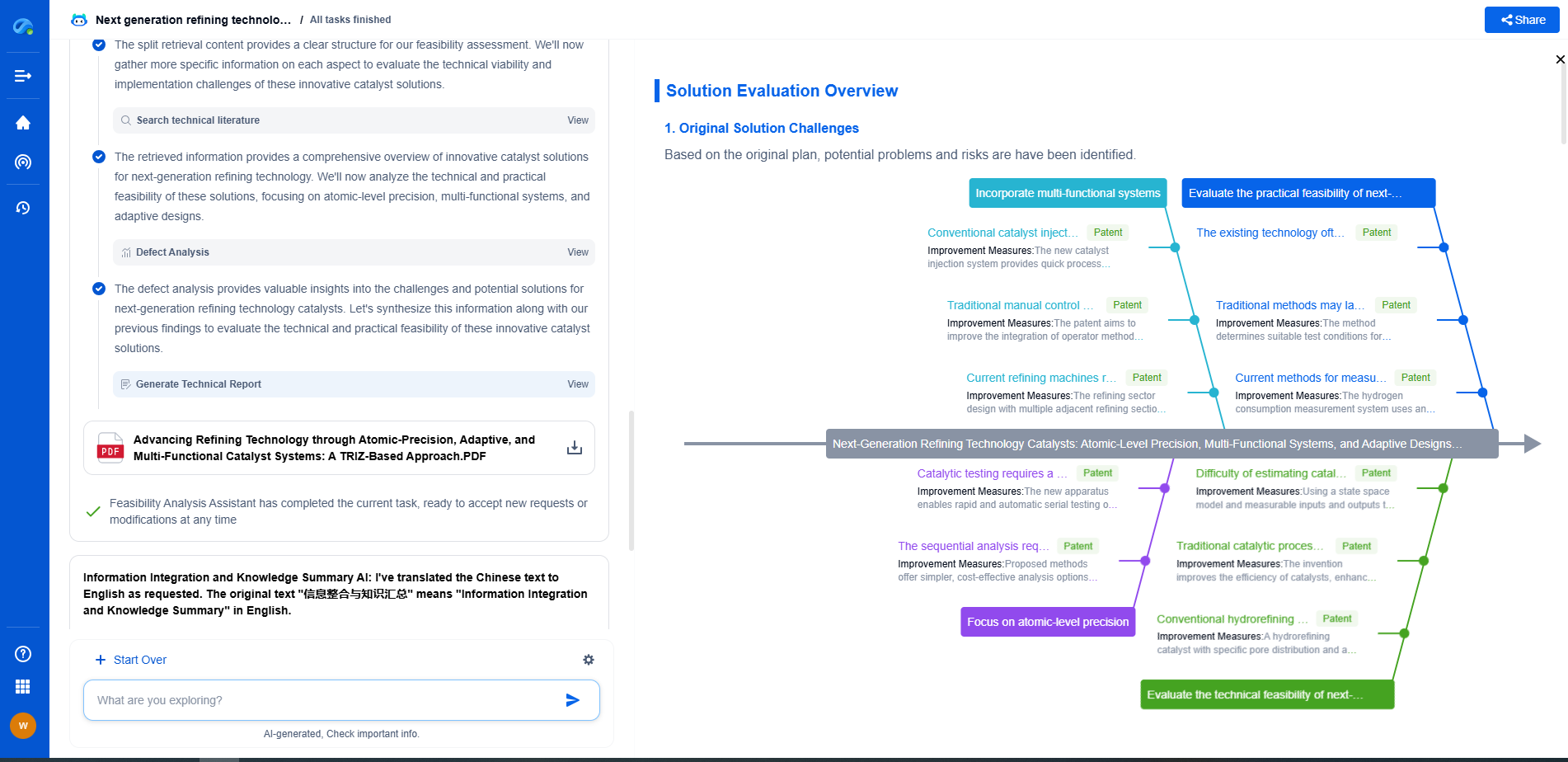Pre-Commissioning Checklist: Ensuring Pipeline Readiness for Service
JUN 20, 2025 |
Ensuring pipeline readiness for service is a critical phase in the lifecycle of any pipeline project. Pre-commissioning involves a series of activities that validate the integrity and functionality of the pipeline before it becomes operational. A comprehensive pre-commissioning checklist is essential to prevent future operational issues and ensure the longevity and safety of the pipeline. In this article, we'll explore key components of a successful pre-commissioning process.
Pipeline Inspection and Testing
Before any pipeline can be deemed ready for service, thorough inspection and testing are mandatory. Inspections involve visual checks for defects, alignment issues, and any signs of damage that may have occurred during construction. Non-destructive testing methods, such as radiographic or ultrasonic testing, are employed to detect subsurface defects. Hydrostatic testing, where the pipeline is filled with water and pressurized to a level above its operational capacity, is also crucial to verify strength and leak integrity.
Cleaning and Flushing
The cleaning and flushing process is essential for removing construction debris, dust, and other contaminants that may have accumulated inside the pipeline. This step often involves the use of pigging, where a device known as a "pig" is sent through the pipeline to physically clean the interior walls. Chemical cleaning may also be necessary to dissolve and remove stubborn residues. Ensuring a clean pipeline interior is vital to prevent blockages and maintain optimal flow efficiency.
Drying and Dehumidification
After cleaning, pipelines must be thoroughly dried to prevent corrosion and ensure the reliability of subsequent testing results. Various drying methods such as air drying, vacuum drying, or the use of desiccants can be employed depending on the pipeline's size and location. Achieving a desired dryness level is crucial for preventing internal corrosion and ensuring the integrity of the pipeline.
Pressure Testing and Leak Detection
Pressure testing is a fundamental component of the pre-commissioning process. It involves pressurizing the pipeline to check for leaks and assess its ability to withstand operational pressures. Leak detection technologies, such as acoustic emission testing or infrared thermography, are employed to identify any leaks that may not be visually apparent. Identifying and rectifying leaks during the pre-commissioning phase prevents costly repairs and potential environmental damage during operation.
Valve and Equipment Checks
Valves and associated equipment must be thoroughly inspected and tested before the pipeline is commissioned. This includes checking for correct installation, alignment, and functionality. Valves should operate smoothly without any obstructions, and all equipment should meet the specified operational requirements. Ensuring the proper functioning of valves and equipment is vital for maintaining control over the flow of products through the pipeline.
Documentation and Compliance
Accurate documentation is a critical aspect of the pre-commissioning process. All test results, inspection reports, and equipment certifications must be meticulously recorded. This documentation not only serves as a reference for future maintenance but also ensures compliance with industry standards and regulatory requirements. Maintaining comprehensive records is essential for demonstrating due diligence and accountability.
Final Walkthrough and Handover
Before the pipeline is handed over for operational use, a final walkthrough is conducted to ensure that all pre-commissioning activities have been completed satisfactorily. This involves a detailed review of all systems and procedures to confirm readiness. The handover process includes transferring all relevant documentation to the operational team, ensuring they have the necessary information for ongoing management and maintenance of the pipeline.
Conclusion
A well-structured pre-commissioning checklist is vital for ensuring pipeline readiness for service. By systematically addressing all aspects of inspection, cleaning, testing, and documentation, pipeline operators can confidently transition to operational status. This comprehensive approach not only safeguards the integrity of the pipeline but also enhances safety, efficiency, and longevity. Investing in a thorough pre-commissioning process pays dividends in the long-term reliability and performance of the pipeline system.
Transform the Way You Innovate in Pipeline Technology—with AI-Powered Intelligence
From corrosion-resistant materials to smart monitoring systems and advanced flow control mechanisms, the pipeline industry is undergoing rapid technological transformation. Yet keeping up with evolving engineering solutions, regulatory landscapes, and competitive patents can be a major bottleneck for R&D and IP teams.
Patsnap Eureka is your AI-powered research companion—built specifically for professionals in high-tech and infrastructure domains like pipeline technology. Whether you're designing high-pressure transport systems, assessing trenchless installation innovations, or safeguarding proprietary flow assurance solutions, Eureka provides real-time insights into global patent trends, emerging technologies, and R&D intelligence—all in one intuitive interface.
Empower your team to innovate faster, reduce technical blind spots, and stay ahead of industry shifts. Discover Patsnap Eureka today and bring clarity and confidence to your pipeline technology decisions.
- R&D
- Intellectual Property
- Life Sciences
- Materials
- Tech Scout
- Unparalleled Data Quality
- Higher Quality Content
- 60% Fewer Hallucinations
Browse by: Latest US Patents, China's latest patents, Technical Efficacy Thesaurus, Application Domain, Technology Topic, Popular Technical Reports.
© 2025 PatSnap. All rights reserved.Legal|Privacy policy|Modern Slavery Act Transparency Statement|Sitemap|About US| Contact US: help@patsnap.com

